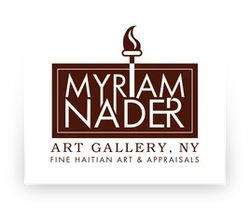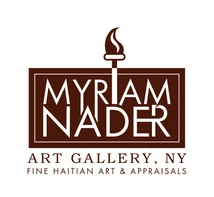
Meanwhile, the history of Haitian art began to be better known in 1940 when an artist, DeWitt Peters shifted to Haiti from California. After establishing an art school and training center, he discovered several unknown artists and helped them become famous for their works of art. Haitian art is popular in South America, Europe and the Caribbean and is recognized worldwide.
Shortly in, 1943 Peters started teaching English in high school as an alternative to military service during World War II. Peters was also talented in the area of watercolor painting and was surprised when he learned that there was no art gallery that exhibited paintings in Haiti. He imagined himself opening an institution that taught talented Haitians that art was a respectable way to make a living.
In 1944 the Haitian government donated a building to Peters after he submitted his resignation letter. He wanted the building to serve as a school and art gallery where Haitians could receive academic instruction in drawing and oil techniques. Peters called this building “Le Centre d’Art.”
One of the first Haitian artists discovered by Peters was a voodoo priest named Hector Hyppolite. Hector used chicken feathers and remains of house paint to create his works of art. After Peters realized how successful Hyppolite was, he began looking for other local artists who had a variety of backgrounds. Artists such as the employee named Philome Obin, an accountant named Toussaint Auguste, and a taxi driver named Rigaud Benoit, are just some names among the many talented people that Peter’s found. The first generation of Haitian artists was hungry enough and motivated to pursue the dream of becoming an artist.
The paintings that the artists created in Le Centre d’Art had a passion for translating their environment and religious ideas on canvas and cardboard. In 1947, Selden Rodman became co-director of the building and convinced Peters that the artists had matured enough in his paintings to begin painting on walls of public buildings. Rodman created and directed the artists’ work on the murals of the Holy Trinity Episcopal Cathedral in Port-au-Pince. After their works were completed in 1951, the murals captured international attention and developed many primitive artists who became well known for their works of art.
Through the experience of becoming an artist at Le Centre d’Art, artists were able to express their works of art to tell the story of Haiti and its own daily history. This has become the subject of Haiti’s works of art. Currently, the country represents self-taught and training artists, whose works of art are extremely popular throughout the world.
Haitian art can be easily found in modern-day museums and galleries. Myriam Nader Haitian Art Gallery remains a contemporary Haitian art gallery based in New York where one can find a plethora of artworks by some of the most well-recognized and famed artists throughout the century. Founded by Myriam F. Nader Salomon, the gallery’s objective is to promote contemporary Haitian art and culture, to appraise collections, and promote Haitian culture.
The gallery has led great emphasis on preserving the original quality of every art piece in its portfolio. It is also BBB accredited with an impressive rating of A+.







 Log in
Log in

1 comment
Happy to find your gallery on the internet. Wonderful paintings.